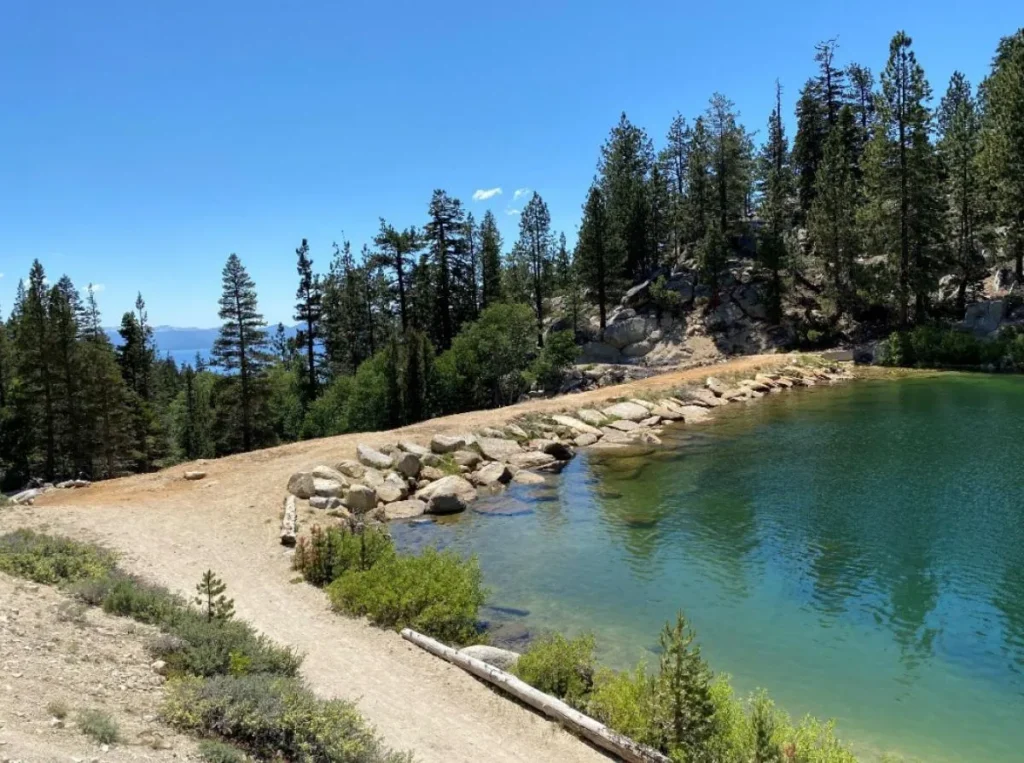
Upgrading Marlette Lake Dam Infrastructure
Nestled high on the eastern slopes of the Sierra Nevada Mountain Range lies Marlette Lake, a pristine alpine reservoir with a history stretching back more than a century and a half. At the heart of this water system stands the Marlette Lake Dam, a structure first built in 1873 to supply water to the booming mining town of Virginia City and its nearby settlements. Today, 152 years later, the dam and lake remain indispensable, serving as a vital water source for Carson City and Storey counties while also standing as a testament to America’s early civil engineering achievements.
The Marlette Lake Water System, of which the dam is the cornerstone, is nationally recognized as a Civil Engineering Landmark. This recognition honors the extraordinary engineering efforts of the 19th century, which included what was once the world’s largest inverted siphon and more than 45 miles of wooden flumes. These innovations allowed water and logged timber to travel from the Lake Tahoe Basin to Virginia City during the height of the Comstock Lode mining era, one of the most significant mining booms in U.S. history.
Historical Significance and Legacy
Marlette Lake’s story began during a period of rapid industrial expansion fueled by silver mining. Virginia City, located nearby, grew into one of the richest mining districts in the world in the late 1800s, but its success depended on reliable access to timber and water. Engineers of the time created an ingenious system that carried water over mountain ridges and valleys to sustain both mining and community life.
The wooden flumes, running miles across rugged terrain, and the record-setting siphon were considered marvels of innovation. They were not just functional but transformative, allowing Virginia City’s population and industry to thrive. Over time, though, as mining declined, the system transitioned to serve municipal needs. Today, the Marlette Lake Water System continues to deliver critical resources to modern communities, linking the past to the present.
Because of this legacy, the dam and lake are not just infrastructure—they are living heritage. Protecting them is as much about cultural preservation as it is about ensuring water reliability and public safety.
The 2017 Inspection: A Wake-Up Call
Although the dam had undergone rehabilitation in the 1950s, decades of natural wear and seismic vulnerability caught up with the structure. A 2017 inspection revealed seepage, a troubling sign that raised alarms among engineers and public safety officials. More importantly, the analysis determined that the dam was susceptible to catastrophic liquefaction if a significant earthquake were to strike.
This risk carried dire implications. A critical dam failure would not only threaten downstream communities but also cause severe damage to Lake Tahoe, one of the most iconic natural landscapes in the United States, and State Route 28, the scenic roadway tracing Tahoe’s east shore. In addition, a collapse would compromise Carson City and Storey counties’ ability to access clean and reliable water supplies.
In short, failure was not an option. The inspection’s findings set into motion a comprehensive rehabilitation initiative to modernize the structure, ensuring its safety for generations to come.
Granite Construction Takes the Helm
After careful planning, Granite Construction—a nationally recognized heavy civil contractor—was selected to carry out the work. Importantly, Granite has been involved since the project’s earliest design stages, collaborating closely with multiple agencies and stakeholders. Key partners include FEMA, the Nevada State Parks, the Nevada State Public Works Division, and several cultural and environmental preservation groups.

Granite’s scope of work is extensive and highly specialized:
- Removal of the original dam and careful excavation of existing materials, some of which will be repurposed.
- Replacement of the main outlet pipe, which is being encased in a protective concrete layer to enhance durability and reduce the risk of leaks.
- Construction of a new earthen embankment dam, designed to withstand modern safety standards, seismic events, and the test of time.
- Reinforcement of infrastructure to guarantee both water delivery reliability and public safety.
The $23.5 million project is being funded through a partnership between the State of Nevada and the FEMA Pre-Disaster Mitigation Fund, reflecting both the regional importance of the dam and its role in disaster risk reduction.
Construction Challenges in a Unique Environment
Working in the Sierra Nevada presents challenges far beyond those faced in urban settings. The high-altitude environment imposes a short construction season, typically running only from May through October, before winter snow and harsh weather conditions return.
Granite Construction broke ground in June 2025, racing against time to complete critical phases. The plan is to have the new dam prepared to safely hold water by October 15, 2025, when the construction window closes. Work will pause for the winter and resume in May 2026, with the full project scheduled for completion by October 2026.
This compressed timeline requires meticulous scheduling, resource management, and coordination among engineers, environmental experts, and construction crews.
Cultural and Historical Preservation
Because of Marlette Lake’s unique history, the project demands compliance with unusual permitting and monitoring requirements. The State Historical Preservation Office (SHPO) has assigned cultural monitors to oversee excavation and construction. As water levels are lowered to allow work on the dam, previously submerged sites are being revealed. These include potential Native American cultural sites and mining artifacts dating back to the late 19th century.
This integration of cultural resource management ensures that construction does not erase or damage the area’s historic and archaeological heritage. Instead, it presents opportunities to study and preserve artifacts that provide a window into the past.
Environmental Stewardship: Protecting Wildlife and Water
Marlette Lake is more than a water reservoir—it is also an ecological resource. The Nevada Department of Wildlife (NDOW) manages the lake as a habitat and brood stock source for rainbow and cutthroat trout. These fish are critical not only to regional biodiversity but also to recreational fishing, which contributes to Nevada’s outdoor tourism economy.
Granite Construction has been working under NDOW’s guidance to minimize environmental impacts. Fish populations are monitored carefully, and protective measures are in place to ensure construction activity does not disrupt the lake’s ecological balance. Maintaining water quality, safeguarding aquatic habitats, and minimizing disturbances are central to the project’s environmental approach.







